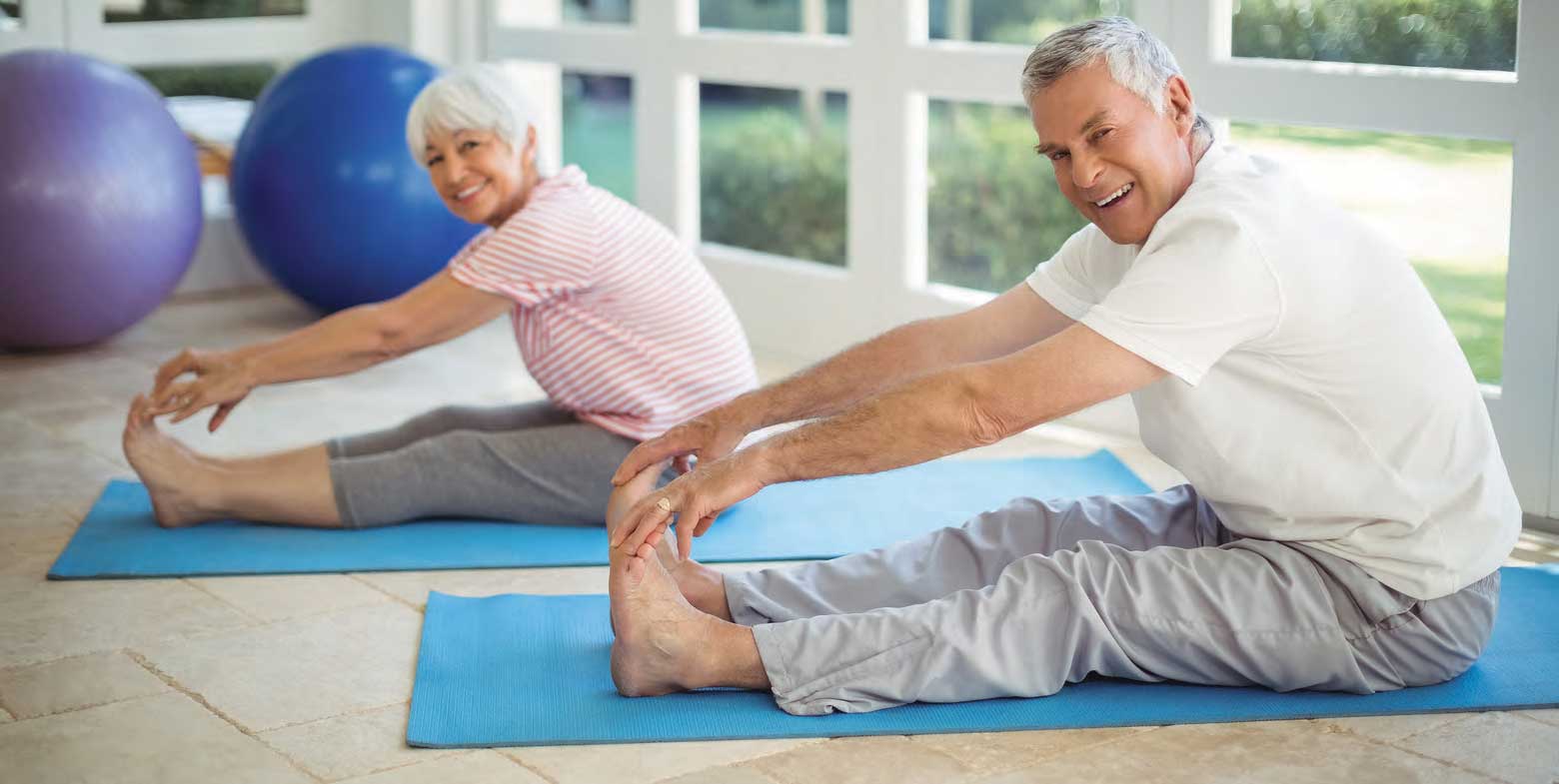
As we age, staying limber and flexible becomes more and more important. Flexibility helps us increase our range of motion so we can easily complete everyday tasks like bending down to tie your shoes or reaching to get a dish from a shelf. This is where stretching exercises for seniors come into play; daily stretching can help improve your flexibility and athleticism, decrease the amount of energy you need to complete a movement, and most importantly, help prevent injury.
Staying physically active as you age is key to a better overall quality of life. Exercise helps keep our bones strong and our backs straighter can help delay the onset of certain diseases like diabetes, relieves the pain you feel from arthritis, improves your mood and mental health, and is essential in fall prevention. It’s never too late to add physical activity into your daily routine! If you’re already exercising on a regular basis, it’s important that you’re taking the time to properly stretch your muscles, too. Stretching will help loosen your joints by activating the fluids within them, which helps reduce damage caused by friction. Stretching will also help lengthen your muscles, and when a muscle is short or tight you’re much more susceptible to injury. Once you add stretching into your workout routine, you’ll notice the results quickly.
Add stretching exercises for flexibility into your workout routine by following these tips:
- Warm up before stretching. A warm up before stretching can be done easily with some light weights or a quick walk. Your muscles need to be warmed up before you start stretching to help you avoid injury.
- Take your time. Ease yourself slowly into the stretch. You should feel a mild pulling in your muscles, but it shouldn’t be painful. A stabbing pain is a sign that you’re stretching too far. If you’re new to stretching exercises, remember that it will take some time for those muscles to loosen up.
- Relax and breathe. Never hold your breath while stretching. Breathe into the movement, carefully pushing yourself a bit farther with each breath.
- Take note of your spine. Be aware of the position of your spine. Don’t let it curve too far as this can make you vulnerable to an injury. Keep your back and joints soft, never locked into position.
- No bouncing. Don’t bounce into a stretch to try to make yourself reach farther. Use steady movements instead of jerking movements to ease into the stretch, as those quicker movements can actually cause the muscles to tighten instead of loosen!
- Hold that stretch. Give yourself at least 30 seconds in each stretching position to allow enough time for the muscle to elongate. Breathe, repeat, and try to stretch slightly farther the next time





 © 2025 Kirby Pines LifeCare Community. All Rights Reserved |
© 2025 Kirby Pines LifeCare Community. All Rights Reserved | 